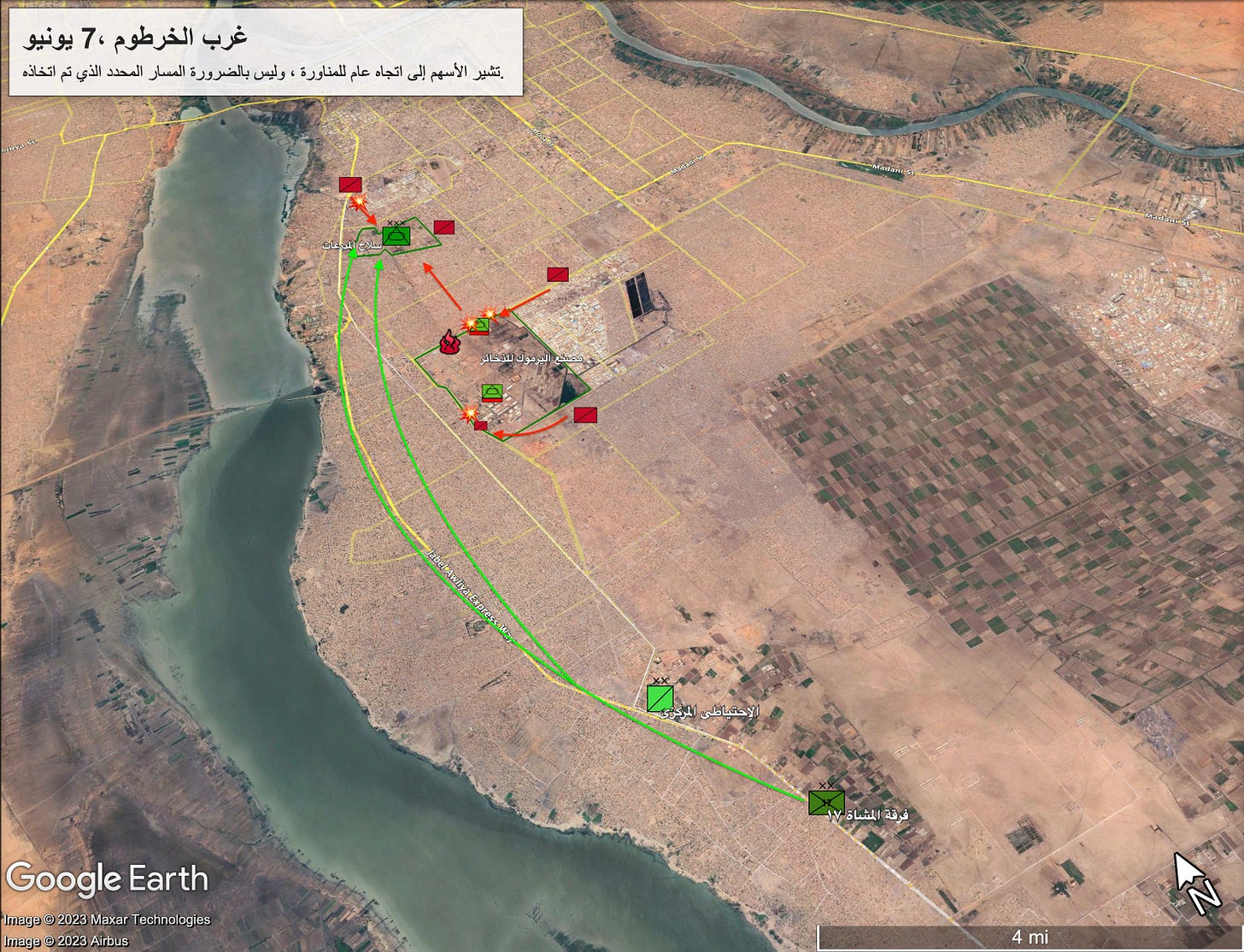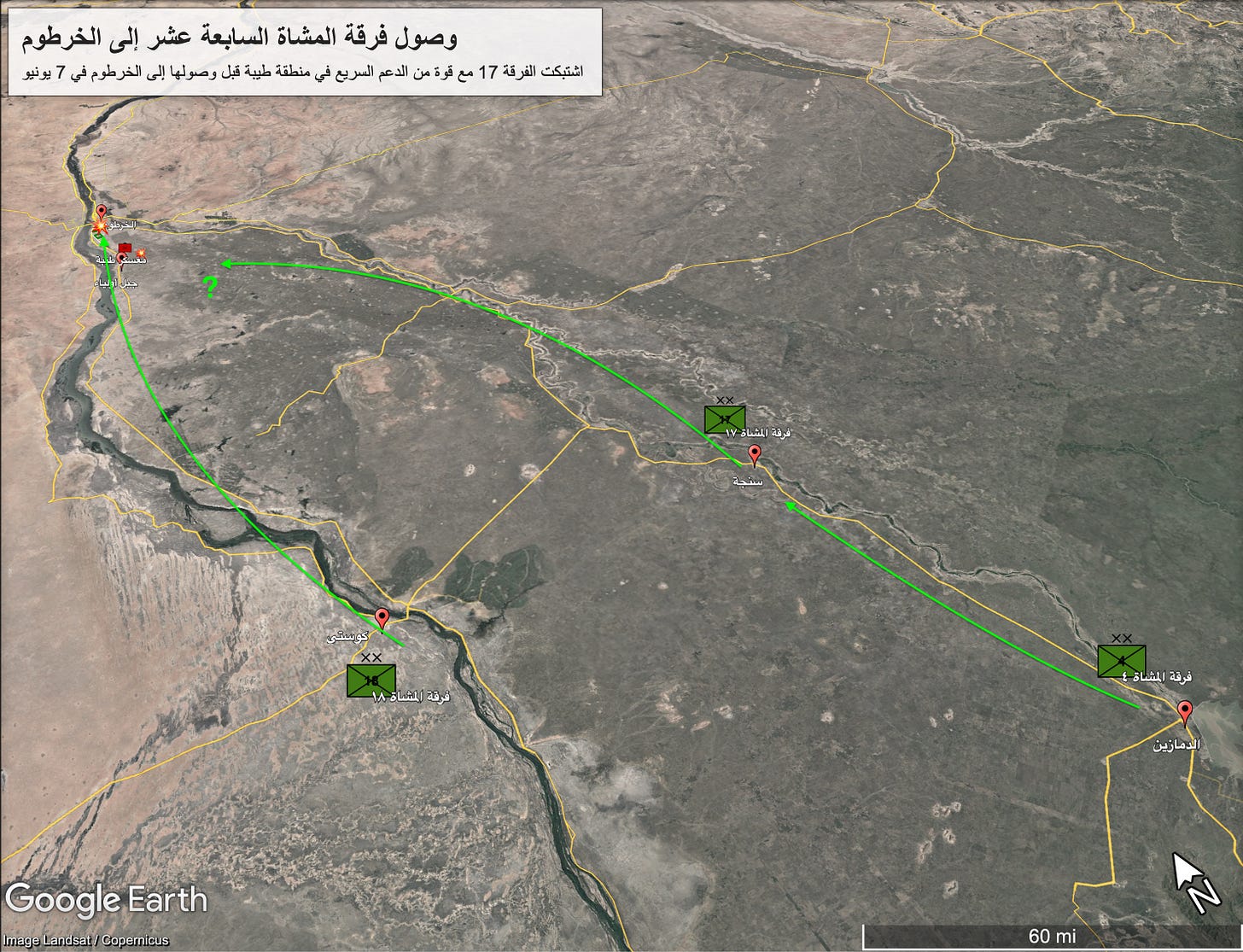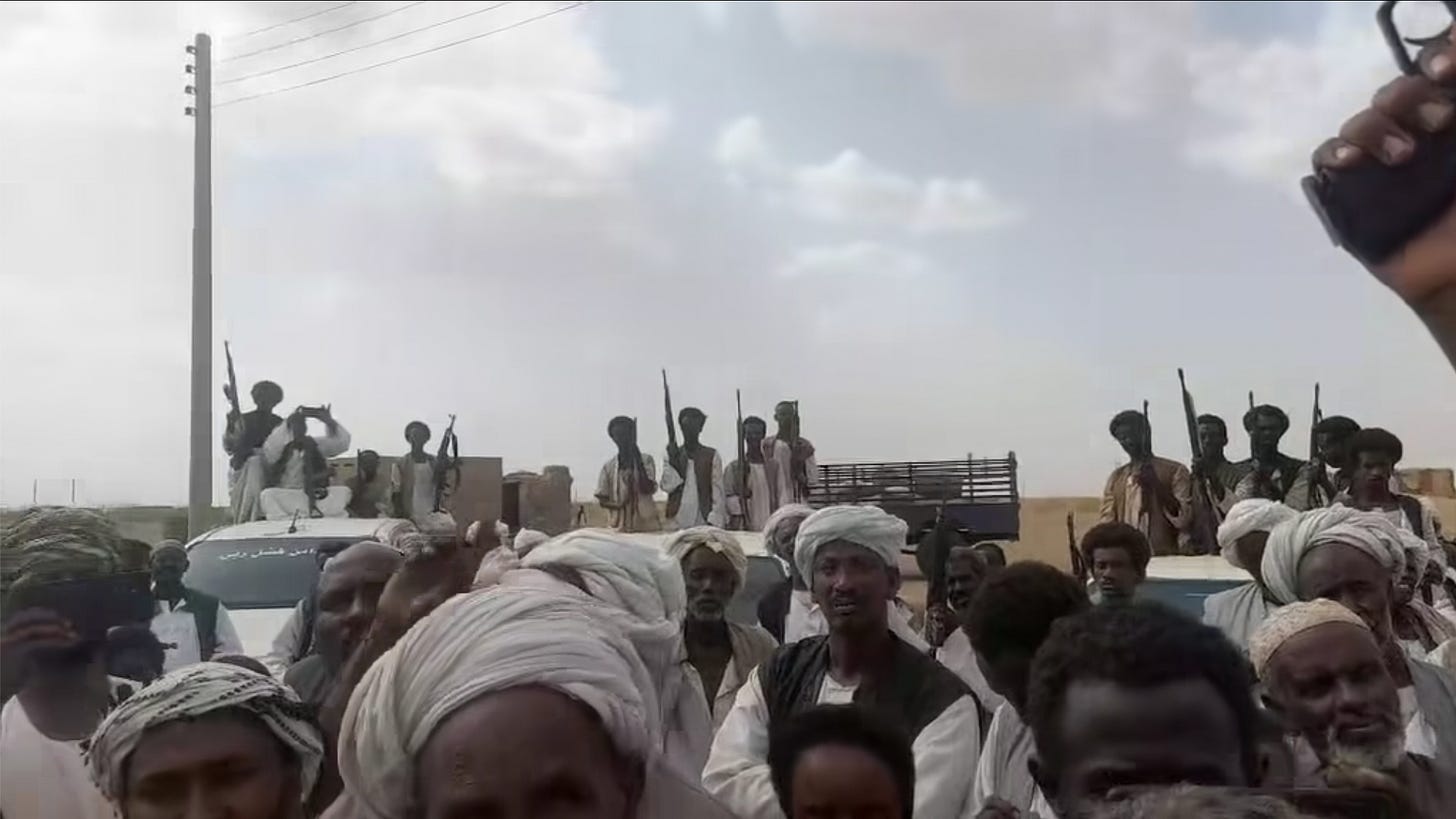SAF Reinforces the Armored Corps
Fresh troops arrive after a major setback at Yarmuk
Soon after my last post on June 6, it became apparent that the Rapid Support Forces (RSF) attack on the Yarmuk munitions complex was a very serious one.
They overran SAF’s northern perimeter on Air Road that evening and completed the capture of the sprawling military-industrial complex the following day. Although SAF tanks counter-attacked and retook positions on Air Road at one point on Wednesday, the Yarmuk complex remained in RSF hands by nightfall of June 7 and has remained under the militia’s control ever since.
Fuel tanks neighboring the Yarmuk complex caught fire and an enormous fireball burned into the night. Based on a couple videos of the fighting and aftermath, I made a map showing how the attack appears to have unfolded.

Trenches and armored vehicles were captured on different sides of Yarmuk and huge munitions stores fell into the hands of the RSF. Dozens of soldiers of the Armored Corps were killed and captured.
The Corps also was attacked simultaneously from the north at Remaiyla Roundabout. RSF captured that location, including SAF entrenchments and at least one tank. Clashes previously occurred there on May 25. It was the northernmost point of SAF control remaining in Khartoum, apart from General Command, which is surrounded.
As the fighting was ongoing in these areas, SAF’s 17th Infantry Division rushed north along Al Shajara Avenue. The division under the command of Major General Ayoub Abdel Qader was greeted by cheering crowds along parts of its route, according to several videos from the expressway and surrounding neighborhoods. It arrived at Armored Corps that evening—too late to help the troops at Yarmuk.
The force also possibly included elements from the 18th Division (Kosti), which was spotted south of Khartoum about a week ago, or from the 1st or 4th Divisions, which likewise are based south of Khartoum.
It’s unclear to me why these reinforcements took so long to reach Khartoum. The 17thDivision left Sinja in Sennar State for Khartoum about a week ago, according to video of a prisoner-of-war interview that I have seen.
Possible explanations include hesitation on the part of the commanders, orders to wait for additional units before proceeding, or difficulty in dealing with RSF units in the outlying areas of Khartoum. We know that the 17th Division clashed with RSF units in the Taiba area during the “Battle of the Onion.”
Now that Yarmuk has fallen, the RSF have moved into more western neighborhoods, including Abu Adam. Some observers are speculating that the Armored Corps headquarters (colloquially called “Al Shajara”) could fall next. Indeed that is what RSF fighters themselves have said, according to videos taken in the aftermath of the fighting at Remaiyla Roundabout and Yarmuk.
However, I question whether the RSF will now risk a frontal attack on the base now that it has been heavily reinforced. A more likely target is the Corps of Engineers, which is defended by a more ragtag group that has suffered casualties in prior engagements.
Video of SAF troops moving through western Khartoum on the afternoon of June 7:
“The General Ayoub arrives to Armored Corps” - Al Shajara base, evening June 7. Several wounded soldiers are seen in the video and a huge fire is burning at the Yarmuk compound about 3 kilometers to the south.
June 7
RSF troops inside the Yarmuk compound on the night of June 7:
RSF troops at Remaiyla Roundabout, June 6 or 7:
Rallying the Beja
A new video posted to Facebook shows the Beja Nazir (tribal chief) Sayed Tirik with tribal gunmen rallying support for the Sudan Armed Forces in Hadalya, a village in Kassala State. The RSF lack support in eastern, central, and northern Sudan.
The East, in particular, has not witnessed any clashes. Although the RSF have the upper hand in fighting in Khartoum, I don't believe that they will be able to extend their control to the Red Sea. Even if they win in central Sudan, a rump state will survive in the east and north, governed by SAF or a successor regime.
This is a key historical difference between Hemedti's RSF and the Mahdist movement of Mohammad Ahmad in the 1880s. Although both depended heavily on fighters from Darfur and Kordofan, the Mahdiyya actually started in central Sudan and won significant support among the Beja too. The Mahdi's best commander was a Beja, the slave trader Osman Digna, who broke the British square at the Battle of Tamai in 1884.
El Fasher Defection
A commander of Sudan’s 6th Infantry Division in North Darfur has defected with some of his men to the RSF. In a video message spread by unofficial RSF media, he promised Hemedti that he will deliver to him soon the SAF divisions in El Fasher and Zalingei.
It would be easy to dismiss this simply as propaganda—after all it is easy to stage such defections—but the fact is that several SAF infantry divisions have done little if anything to help the war effort, which possibly reflects the divided loyalties of either the commanders or the soldiers. I am referring to the 22nd, 20th, and 14th divisions, among others, which are based in areas where RSF has recruited heavily. In this video, the commander says, "That division (the 6th) are all our sons (i.e. many Darfur Arabs)."






